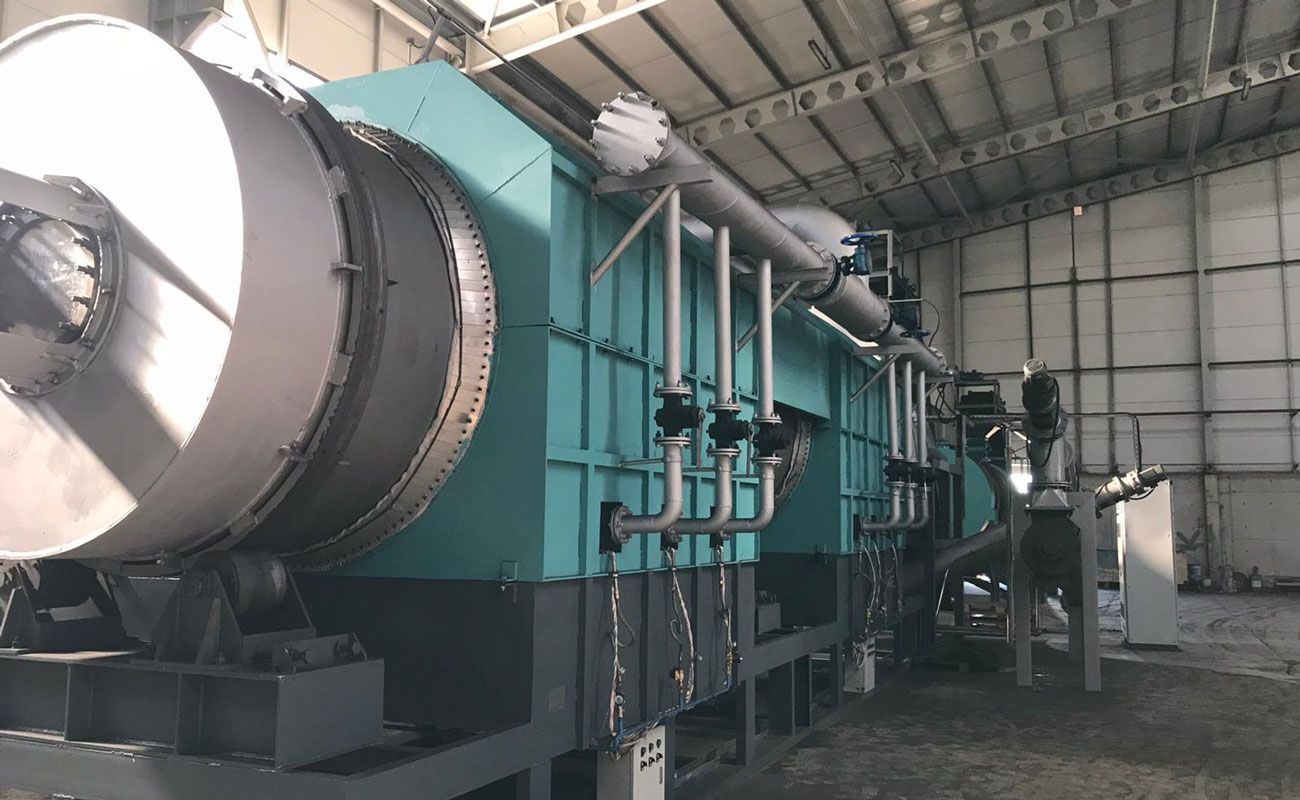Tar Control in Wood Charcoal Production
Wood charcoal production via pyrolysis has gained prominence as a sustainable method for waste management and carbon sequestration. However, like other biomass pyrolysis processes, it presents several challenges, particularly concerning the management of tar. Tar, a byproduct of the thermal decomposition of wood, is a sticky, volatile substance that can create operational difficulties in pyrolysis plants. Effective tar control is essential not only to improve the efficiency of the process but also to ensure environmental compliance and reduce operational costs.
The Role of Tar in Wood Pyrolysis
During the pyrolysis of wood, organic material is heated in an oxygen-limited environment, resulting in the breakdown of biomass into gases, liquids, and solid residues (charcoal). Tar forms primarily in the liquid phase of pyrolysis, as complex organic compounds break down and condense. The presence of tar in charcoal making machine creates several operational challenges, including clogging of pipes, reduced efficiency of gas combustion, and the need for additional cleaning and maintenance procedures. Furthermore, unprocessed tar can lead to environmental pollution if not properly managed.
While tar is often seen as a nuisance in pyrolysis systems, it also contains valuable hydrocarbons that can potentially be converted into fuel or other valuable chemicals. Therefore, efficient tar management in pyrolysis plants not only addresses operational difficulties but can also open up opportunities for value recovery.

Tar Management Strategies in Pyrolysis Plants
To minimize the adverse effects of tar and maximize the potential benefits, several strategies are employed in biomass pyrolysis plant. These strategies focus on reducing tar formation, enhancing tar removal, and facilitating the conversion of tar into useful products.
1. Temperature Control During Pyrolysis
The temperature at which pyrolysis takes place significantly influences the formation of tar. Higher temperatures generally result in lower tar yields as the decomposition of organic matter is more complete. However, excessively high temperatures can lead to the degradation of valuable products such as gases and bio-oil. Therefore, optimizing the temperature within the pyrolysis reactor is crucial to strike a balance between reducing tar production and maximizing the output of usable gases and charcoal.
In many pyrolysis plants, a careful temperature profile is maintained to ensure that tar is minimized while ensuring efficient energy use. Thermal cracking or reforming of tar into lighter hydrocarbons can also be achieved by increasing the temperature, leading to more efficient gas production.
2. Catalytic Cracking
Catalytic cracking is another effective method for reducing tar formation. By introducing catalysts into the pyrolysis reactor or the gas phase, pyrolysis plants can break down larger tar molecules into smaller, more volatile hydrocarbons. These smaller molecules are easier to capture and use as fuel or further processed into chemicals. Common catalysts used for tar cracking include zeolites, alumina, and other metal-based catalysts that facilitate the breakdown of complex hydrocarbons in the gas phase.
Catalytic cracking is especially valuable in improving the overall yield and quality of syngas (synthesis gas), which can be used for energy production or as a feedstock for chemical production. In pyrolysis plants that are designed to produce both charcoal and valuable chemicals, catalytic cracking plays a key role in increasing process efficiency and product diversification.
3. Two-Stage Pyrolysis Systems
A two-stage pyrolysis system involves separating the pyrolysis process into two distinct stages: one for the production of biochar and another for the cracking of volatile gases and tar. This system allows for the more efficient conversion of tar into useful products such as syngas or bio-oil, which can then be used to power the pyrolysis plant itself or be sold as marketable byproducts.
The first stage of the process involves the thermal decomposition of the wood to produce biochar, while the second stage focuses on cracking the volatile gases, including tar, to produce cleaner, higher-quality gases. By separating these two stages, pyrolysis plants can improve product yield and reduce the overall formation of tar.
4. Gas and Tar Separation
To further minimize tar-related issues, some pyrolysis plants use advanced gas and tar separation techniques. These systems can involve a combination of cyclone separators, scrubbers, and filters to capture and condense tar before it reaches the plant’s gas combustion or fuel conversion units. In some designs, tar is cooled and condensed into a liquid form, which can then be either used as fuel or further processed into chemicals.
High-efficiency filtration systems also help prevent tar buildup in the reactor and other plant equipment, reducing maintenance costs and improving the longevity of the pyrolysis system.
5. Post-Pyrolysis Tar Treatment
In some cases, the tar that is produced during pyrolysis can be further treated or processed to recover valuable chemicals or convert it into fuels. This can involve methods such as hydroprocessing or hydrocracking, which use hydrogen to break down heavier tar molecules into lighter, more useful compounds. Additionally, the tar can be subjected to distillation to separate out useful fractions that can be sold as fuel oils or used in other industrial applications.
The Environmental and Operational Benefits of Tar Control
Effectively managing tar in pyrolysis plants offers numerous operational and environmental benefits. Reducing tar formation ensures smoother plant operations, improves equipment lifespan, and lowers maintenance costs. Moreover, capturing and processing tar can provide an additional revenue stream through the sale of chemicals or fuels derived from it.
From an environmental standpoint, minimizing tar emissions helps reduce air pollution, as the unprocessed byproducts of tar can be hazardous to health and the environment. By ensuring complete combustion of the pyrolysis gases and liquids, pyrolysis plants can significantly lower their environmental footprint and meet regulatory standards for emissions.
